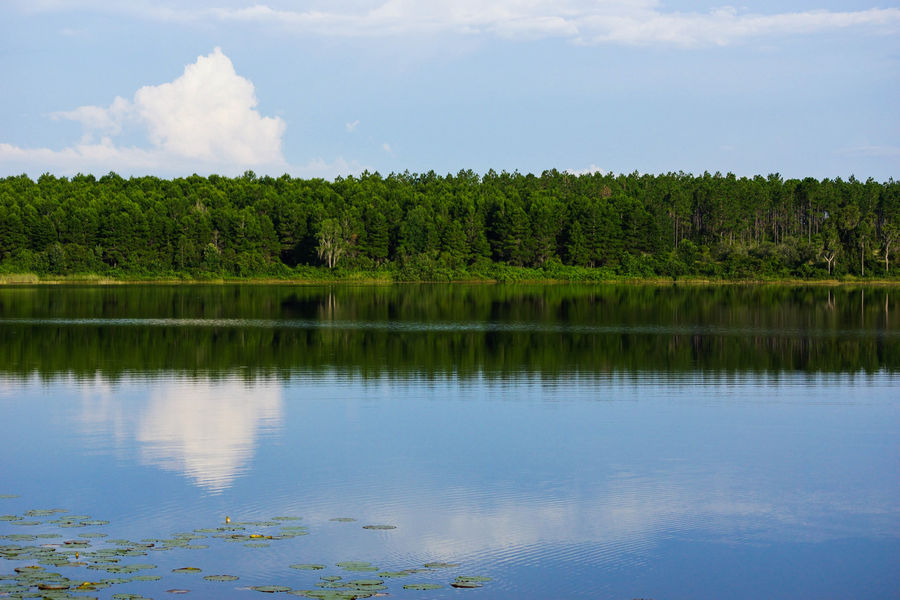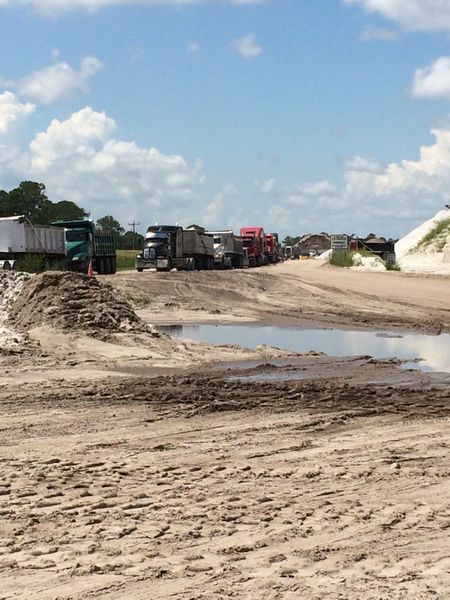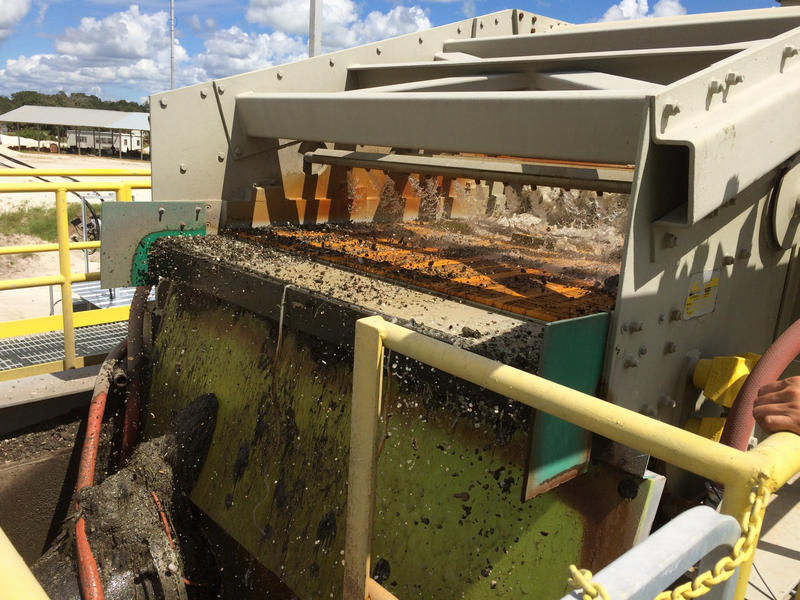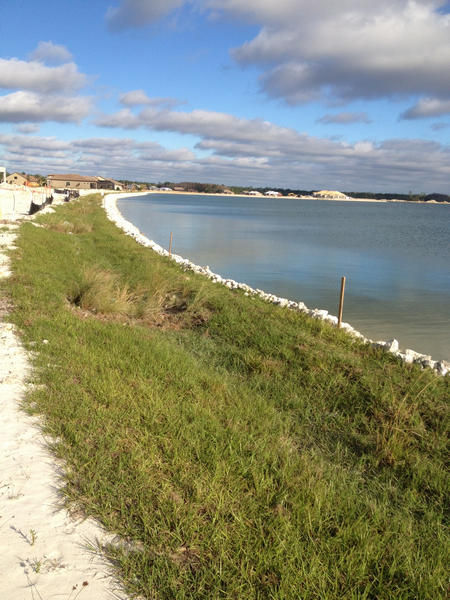The Mining and Mitigation Program administers reclamation and environmental resource/stormwater management permit programs for mining operations in Florida, including "other resources" such as gravel, sand, dirt, clay (other than fuller’s earth) and any other solid mineral resource. Reclamation standards for other resource mining or extraction are detailed in Part II of Chapter 211 Florida Statutes (F.S.), Part III of Chapter 378, F.S., and Chapter 62C-39, Florida Administrative Code (F.A.C.). An environmental resource permit is also required for other resources mining projects and most borrow pits. Environmental resource permitting standards are detailed in Part IV of Chapter 373, and Chapter 62-330, F.A.C. The Mining and Mitigation Program processes ERPs for mines. ERPs for borrow pits (sites where sand, shell and/or clay are extracted for off-site use) that have no onsite sorting, washing, or grading are issued by the Water Management Districts; ERPs for borrow pits with onsite sorting, washing, or grading are processed by the Mining and Mitigation program. The Mining and Mitigation program administers the mandatory reclamation program under Chapter 378, Florida Statutes, for all mines and borrow pits. Mines and borrow pits are subject to mandatory reclamation requirements.
Permits or authorizations from other local, state or federal agencies may also be required prior to mining or resource extraction.
What are the “other resources” that are mined or extracted in Florida?
Sand and gravel may be composed mostly of quartz (silicon dioxide) along with other minerals. Typically the mined material is washed and sorted to separate the sand and gravel from the silts and clays.
Clays are hydrous aluminum silicates mixed with varying impurities and in many mineral forms. This includes kaolin (kaolinite). Kaolin is used to provide the gloss on coated paper.
Dirt or fill material is typically extracted from borrow pits. A borrow pit is a location where the natural deposits, such as fill dirt, are removed to make them suitable for use to build up land. No on-site processing is involved except for scalping screens to remove large rocks, wood and other debris. Borrow pits where the material is used on-site are not subject to reclamation requirements. Borrow pits where the material is used off-site are subject to reclamation requirements.
Where are these resources mined or extracted in Florida?
These resources can be found in every county. Kaolin is mined in Putnam County. The mine boundaries can be seen through Map Direct.
How are these resources mined or extracted in Florida?
Prior to mining or resource extraction, the trees may be harvested and the land is cleared. The topsoil may be stockpiled for use during reclamation. The overburden (earthen material that will not be sold) is removed and stockpiled along the edge of the extraction location. The overburden may be used to contain sediment and stormwater within the mine. After mining or extraction is complete, the topsoil and overburden may be used in reclamation for slopes and revegetation.
What are the reclamation standards for these other resources mines and borrow pits?
The Florida Legislature requires reclamation of lands disturbed by mining or resource extraction. For mines or borrow pits that began after Oct. 1, 1986, all areas disturbed by mining or extraction must be reclaimed. "Existing mines” are mines where the operation began on or before Oct. 1, 1986. At existing mines, reclamation requirements apply only to new areas that were disturbed by mining or extraction activities after Jan. 1, 1989.
Operators of other resources mines and borrow pits may have to provide notice of intent to extract to the department. Section 378.804, F.S., provides that an operator is not required to provide a notice to the department if the other resources extraction site will not exceed 20 acres. Reclamation at the site must still meet all other requirements of the statutes and rules.
Reclamation means the reasonable rehabilitation of land where resource extraction has occurred (Chapter 378.403, F.S.). Areas subject to the reclamation requirements must be reclaimed after extraction is complete. Debris, litter, junk, worn-out or unusable equipment or materials must be disposed of. The land must be contoured and stabilized to control erosion. Bare areas must be revegetated. Reclamation standards for other resources mines and borrow pits are detailed in Part III of Chapter 378, F.S., and Chapter 62C-39, F.A.C. The forms used for the reclamation program and filing instructions may be obtained online.
What permits are required for other resources mines and borrow pits?
There is no comprehensive permit that covers all aspects of large projects, including mines. An applicant may have to consider the requirements of several regulatory agencies. Each agency may regulate only the specific activities based on authority granted by Congress, the Legislature or county commission. Prior to construction, the applicant must have all necessary federal, state and local approvals.
The Mining and Mitigation Program reviews applications for Environmental Resource Permits (ERPs). The water management districts review the ERP applications for borrow pits which do not have onsite processing of the resource. Activities that typically require an ERP include dredging and filling located in, on or over wetlands or other surface waters, as well as the construction of structures. The permit governs the construction, alteration, operation, maintenance, repair, abandonment and removal of stormwater management systems, including dams, impoundments, reservoirs, appurtenant works, and works. The rules used to implement the ERP are authorized under Chapter 373, F.S. ERPs are also subject to Chapter 403, F.S., which governs activities that may pollute ground or surface waters, including wetlands. Chapter 62-330, F.A.C., and the Applicant’s Handbook Volume I and Applicant's Handbook Volume II, provide explanations, procedures, guidance, standards and criteria for ERPs. The forms used for the ERP program and filing instructions may be obtained online.
For mines and borrow pits in the Northwest Florida Water Management District only. After Oct. 1, 2007, new mines and borrow pits must obtain an ERP prior to starting construction or land-clearing activities. A mine or borrow pit existing prior to Oct. 1, 2007, may continue to be mined deeper within the area prepared for excavation prior to Oct. 1, 2007, without an ERP. Land prepared for excavation includes lands intended for immediate excavation and may involve preparation such as land clearing, root raking, removal of top soil, etc. An ERP is required prior to expansion of an existing mine or borrow pit that requires additional land preparation for excavation.
How does the department monitor activities at mines?
The ERP will require the operator to provide the department with an annual report describing activities for the previous calendar year, and proposed mining and reclamation activities for the current year. The ERP or State 404 permit may also require additional monitoring reports. Routine compliance inspections are conducted by department staff to ensure that extraction and reclamation activities follow permit and reclamation rules.
How can you obtain public records?
You can obtain a list of applications for permits and conceptual reclamation plans that are currently under review with the department. This will provide the application number which can be used when requesting public records.
The Department of Environmental Protection maintains public records in an electronic document management system. You can obtain public records relating to applications, plans, reports and inspections through either of these websites:
You may also request public records by contacting the Mining and Mitigation Program. The contact information is below.
For More Information
Florida Department of Environmental ProtectionMining and Mitigation Program2600 Blair Stone Road, Mail Station 3577Tallahassee, Florida 32399850-245-8336 (phone) / 850-245-8356 (fax)
MiningAndMitigation@dep.state.fl.usReferences
J.L. Calver (1949) Florida Kaolins and Clays. Information Circular No. 2. Florida Geological Survey, Florida State Board of Conservation.





